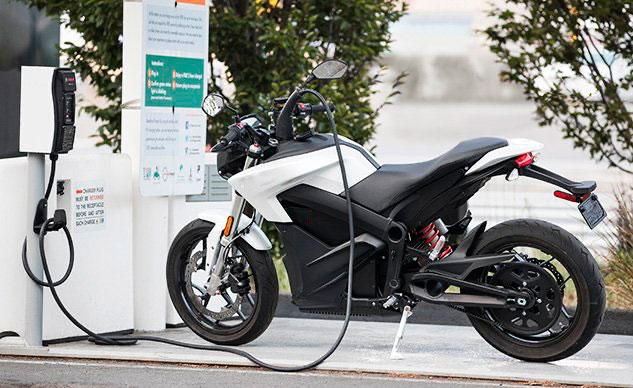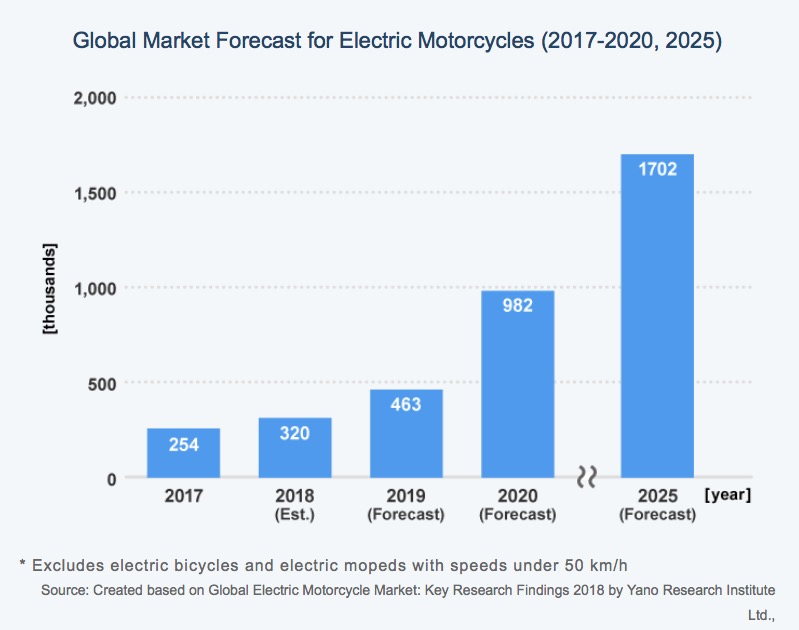Where and how to charge my electric motorcycle?
We've all heard of range anxiety for electric vehicles, the fear of running out of power before you reach your destination.
If you have a garage with easy access to a regular AC socket, you can plug in overnight and wake up to a fully-charged battery every morning. If your workplace is likewise set up with outlets in the parking area, then you should be fine using your electric motorcycle as a daily commuter. This article gives you background to the options associated with these ways of charging.
If you have to make a longer trip, it's important to know where there are charge stations and how they work. These are mainly clustered around large cities, which is why electric motorcycles are usually marketed more as a form of urban transportation. Read on for more details.

According to the European Alternative Fuels Observatory, there are currently 200,000 public 'Level 2' charging stations and 25,000 DC fast-charge stations in Europe. There are many apps that help you find and use these charging stations. For example if you get the PlugShare app, you can set filters for the type of charging outlets that are compatible with your vehicle, and for most commercial stations, you can even find out whether the chargers are already in use, or whether they're working or broken. I've linked to the download at the bottom of this article.
But before we continue further, let's get familiar with the technical terms associated with EV charging. Not all electric motorcycles are compatible with all types of charging stations and it's important to know what kind of charging location is compatible with your electric motorcycle.
Currently, there are three levels of charging available.
Level 1 is a 120 volt outlet, your typical standard household outlet in the USA. It's quite slow, but luckily we don't have to use this in Europe :)
Level 2 chargers use 240 volts, which is the voltage of the standard European household socket. Level 2 charging is how you typically plug in your bike overnight. If we talk about Level 2 charging stations, then in theory they are available anywhere there is an AC socket, which numbers in the millions. They are also typically available at standard charging stations.
For home or office use, a Level 2 scalable "Home Charger" system can increase the charging speeds (dramatically reducing charging times). The limiting factor is usually the grid connection - a standard domestic single phase (230V) supply won't be able to achieve a charging rate of more than 7.4kW. Even with a 3-phase connection, the power rating for AC charging is limited to 22kW. In practice, this is only a problem for electric cars, which require much more power than is required for electric motorbikes.
For our 7.2kWh pack, it's possible to charge from 0% to 100% at home in just an hour with a suitable 32 amp home charger.
Both Level 1 and Level 2 charging work on AC power. A step up to Level 3 is commonly known as 'DC Fast Charging'. This boasts the fastest charging speeds of 50kW - 120kW. Unfortunately, DC Fast Charging stations are expensive, and therefore still uncommon. They also negatively affect the lifetime of your battery because of the heat generated during charging. But perhaps the biggest drawback is that you might have to queue for a few hours to get a quick recharge. For these reasons, I don't recommend using DC fast-charging at this time.
Finally, let's take a look at how your bike can be connected to these different charging options.
Electric motorcycles are connected to a chargepoint via a cable which must be fitted with connectors, one of which fits into the motorbikes inlet socket, and the second of which fits into the charger outlet socket. This may be a simple cable, or permanently tethered to a charging station.

Regarding the plugs, unfortunately there are a few different common connector protocols. But the most relevant for motorcycles are the AC options. Either use a simple standard household AC plug up to 3kW (13A) in any socket, or the European Type 2 plug, which goes up to 43kW.
In the end, the actual limit of charging is your charger's capacity. If overnight charging isn't a problem for you then for example even a modest on board charger like 0.7kW power is sufficient in 10 hours to charge its 7.2kWh battery. The added benefit of this slow-charging is that it is the best way to prolong the life of your batteries.
European Alternative Fuels Observatory map: https://www.eafo.eu/fuel-map
Plugshare App: https://www.plugshare.com

Ian Former
Consultant at Devs motorbikes, media junkie, sports fan. I spend a bit of my time thinking about what we'll do when the oil runs out.



